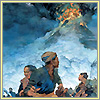

|
|
Tambora
Indonesia
1815
Casualties: 70,000-92,000
Major Cause: Starvation
Tambora unleashed its fury over two weeks in April in the most explosive and
lethal series of eruptions in recorded history. The blasts propelled rock and
ash perhaps 25 miles into the sky above the island of Sumbawa. Volcanic gases,
including sulfur dioxide, combined with moisture in the air to form vast toxic
clouds that soon gave rise to acid rain. Roughly 10,000 people were killed
immediately, and tens of thousands more died of starvation and disease in
subsequent months. Tambora's impact was global, as volcanic ash and aerosols
rose high into the stratosphere, filtering out sunlight and heat. Abnormally
cold weather the following year caused crop failures as far away as Europe. In
New England, snow fell in July and August, and 1816 became known as the "year
without a summer."
|
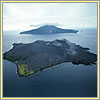

|
|
Krakatau
Indonesia
1883
Casualties: 36,000-40,000
Major Cause: Tsunamis
The
force of this eruption on the small, uninhabited island of Krakatau was so
great that much of the volcano, and two-thirds of the island itself, collapsed
into the sea, triggering 120-foot waves that devastated neighboring islands.
One eyewitness wrote, "the coasts of Java, as those of Sumatra, were entirely
destroyed....The villages and trees had disappeared; we could not even see any
ruins, for the waves had demolished and swallowed up the inhabitants, their
homes, and their plantations....This was truly a scene of the Last Judgment."
The island chain then called the Dutch East Indies, now Indonesia, has suffered
many such scenes. It has more active volcanoes than any other country, and
since 1600, these volcanoes have killed more than 160,000 people. That figure represents nearly
half of the world's recorded volcano fatalities.
|
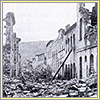

|
|
Mont Pelée
Martinique, French West Indies
1902
Casualties: 30,000
Major Cause: Pyroclastic Flows
There
were clear signs in the spring of 1902 that Pelée threatened the nearby
city of St. Pierre. For weeks heavy ashfalls blanketed the city, and small
earthquakes shook the region. Clouds of sulfurous gas hung in the air, and
birds fell dead from the sky. A boiling-hot mudflow had even streamed down the
mountainside, burying a sugar refinery and its workers. Yet authorities in the
French colonial government discouraged evacuation of St. Pierre because they
feared it might tip an upcoming election toward the socialist opposition. On
the morning of May 8, following a powerful explosive eruption, a turbulent
cloud of superheated gas and rock fragments called a pyroclastic flow careened
down the mountainside at nearly 300 miles per hour. It hit the city with the
force of a hurricane, engulfed it, and set it ablaze within seconds.
Astonishingly, only one of an estimated 30,000 inhabitants, a prisoner jailed
in an underground cell, was known to have survived.
|
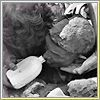

|
|
Nevado del Ruiz
Colombia
1985
Casualties: 23,000
Major Cause: Mudflows
As
with the disaster at Mt. Pelée, the shocking loss of life caused by this
eruption might have been averted if government authorities had heeded warnings.
Colombian scientists monitoring Nevado del Ruiz had cautioned town leaders of
Armero about the volcano's increased activity and even radioed urgent messages
on the night of the eruption. But no systematic efforts were made to evacuate
the sleeping town of 28,000. The authorities likely assumed that the town,
roughly 45 miles from the volcano's crater, was out of harm's way. Before dawn
the next morning, however, two and a half hours after the start of the
eruption, a volcanic debris flow called a lahar buried Armero. The explosive
eruption had rapidly melted much of the volcano's snow-covered glacier, sending
water surging down canyons—picking up soil, volcanic ash, and red-hot
rock as it went. More than three-quarters of the town's citizens perished.
|
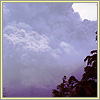

|
|
Unzen
Japan
1792
Casualties: 15,000
Major Cause: Landslides, Tsunamis
The
worst volcanic disaster in Japan's history occurred in the Unzen volcano
complex on the island of Kyushu. Accounts of the day tell of a massive
avalanche of rock that hurled down Unzen's Mount Mayuyama. The landslide,
probably a pyroclastic flow of hot ash and debris, swept through the ancient
Shimabara City, killing as many as 10,000 people. As debris plunged into the
sea and tremors shook the region, a series of tsunamis arose to kill thousands
more and destroy roughly 3,000 houses along the coast. In June 1991 Unzen awoke
from a 200-year slumber to again release enormous clouds of ash and rock,
killing dozens of people. On Mount Mayuyama today, above a rebuilt and
densely populated Shimabara City, an ampitheater-shaped scar from the 1792
landslide is a sobering reminder of Unzen's potential danger.
|
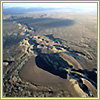

|
|
Laki
Iceland
1783
Casualties: 9,000
Major Cause: Starvation
In
June 1783, a 16-mile-long fissure began opening up across the flanks of the
Laki mountain ridge in southern Iceland. The fissure, marked by 300-foot cones
of ash and debris, spewed out vast quantities of lava for months. Ultimately,
about three and a half cubic miles of lava gushed from the fissure and spread
across 200 square miles, burying farms and churches in the sparsely populated
countryside. More lava poured onto Earth's surface than in any other eruption
in recorded history. No one died directly from the lava flows, but the volcanic
gases released at Laki had devastating consequences. A bizarre blue fog, made
of sulfuric acid aerosols, hovered over Iceland for weeks and even wafted to
Europe. Toxic gases and altered weather patterns caused the greatest famine in
Iceland's history, known as the "Haze Famine."
|
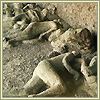

|
|
Vesuvius
Italy
1631
Casualties: 3,500
Major Cause: Pyroclastic Flows
Because
it preserved so many details of the ancient Roman world in volcanic ash, the
eruption of Vesuvius in A.D. 79 is better known. But the eruption of 1631
killed roughly the same number of people in a similarly gruesome way. A monk,
watching from a safe distance, observed seven "streams of lava" shooting out
from the volcano's southwestern flank and flowing toward the Bay of Naples.
These lava streams were actually pyroclastic flows that ripped through three
towns before reaching the bay. Most of the casualties were in Torre del Greco,
where civic officials hesitated too long before ordering the town evacuated.
Today, Vesuvius remains active and, with nearly three million people living in
its shadow, is the most dangerous volcano in Europe.
|
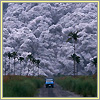

|
|
Mt. Pinatubo
Philippines
1991
Casualties: >700
Major Cause: Pyroclastic Flows
The
eruption of Pinatubo in June 1991 could easily have been among the worst
volcanic disasters in history. Only one other eruption in the 20th century
released more volcanic material, and Pinatubo's explosive fury coincided with a
typhoon that showered rain-soaked ash throughout the region. But unprecedented
cooperation among Earth scientists monitoring the volcano, American and
Philippine military authorities, and the Philippine government lead to the
efficient evacuation of roughly 85,000 people before the volcano's climactic
eruption on June 14. In the days that followed, the total number of evacuees
rose to about 250,000. Scientists had closely watched the volcano from its
first rumblings in April, carefully assessed the hazard zones, and predicted
the most violent blasts with remarkable accuracy. Despite all-out efforts to
evacuate the threatened population, the eruption directly killed between 200
and 300 people, and many others perished as roofs collapsed under the weight of
heavy ashfalls. Yet at least 20,000 people—and perhaps thousands
more—were saved by the evacuation.
|
Note on Sources

| 
|

